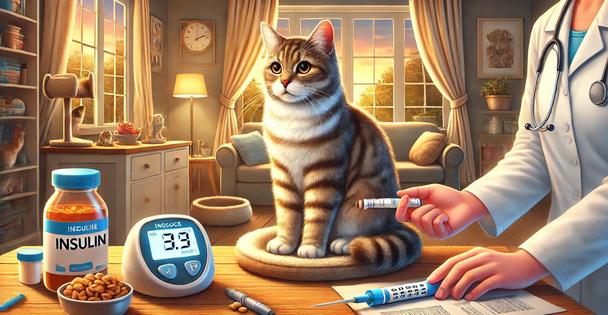Diagnosing and dealing with feline diabetes
Feline diabetes is a growing concern among pet owners, as more cats are diagnosed with the condition each year. Recognizing the signs, seeking prompt veterinary care, and understanding treatment options can significantly improve a cat’s quality of life. Diabetes in cats occurs when the body either does not produce enough insulin or cannot properly use the insulin it makes, leading to elevated blood sugar levels. Common symptoms include increased thirst, frequent urination, weight loss despite a good appetite, lethargy, and a dull coat. Some cats may also develop weakness in their hind legs due to diabetic neuropathy, which can affect their mobility.
A veterinarian will diagnose diabetes through blood and urine tests that measure glucose levels. Persistent hyperglycemia, or high blood sugar, is a key indicator of the disease. Additional diagnostic tests may be performed to rule out other medical conditions that can mimic diabetes. Once diagnosed, treatment often involves insulin therapy, dietary management, and regular monitoring. Insulin injections are typically administered twice daily, and while this may seem daunting, many pet owners find that their cats quickly adjust to the routine. A consistent feeding schedule is crucial, with many veterinarians recommending a high-protein, low-carbohydrate diet to help regulate blood sugar levels. Prescription diets formulated for diabetic cats can be beneficial, but owners should always consult with their vet before making dietary changes.
Regular monitoring is essential for managing feline diabetes. Owners should track their cat’s eating and drinking habits, energy levels, and overall behavior. Blood glucose curves, which involve measuring glucose levels at different times of the day, help determine whether insulin doses need adjustment. Some cats may go into diabetic remission, meaning they no longer require insulin, especially if weight loss and dietary changes help their body regulate blood sugar more effectively.
Complications from diabetes can arise if left untreated or poorly managed. Hypoglycemia, or low blood sugar, can occur if too much insulin is administered, leading to symptoms such as weakness, seizures, or even coma. If a cat exhibits these signs, they should be given a small amount of a sugar-containing substance, such as corn syrup, and taken to a veterinarian immediately. On the other hand, uncontrolled diabetes can lead to diabetic ketoacidosis, a life-threatening condition requiring emergency veterinary care.
Providing a stable and stress-free environment is key to helping a diabetic cat thrive. Routine vet check-ups, proper diet, and careful insulin administration allow many cats to lead happy, comfortable lives despite their diagnosis. With diligent care and early intervention, feline diabetes can be managed effectively, ensuring a better quality of life for both the cat and its owner.









Comments